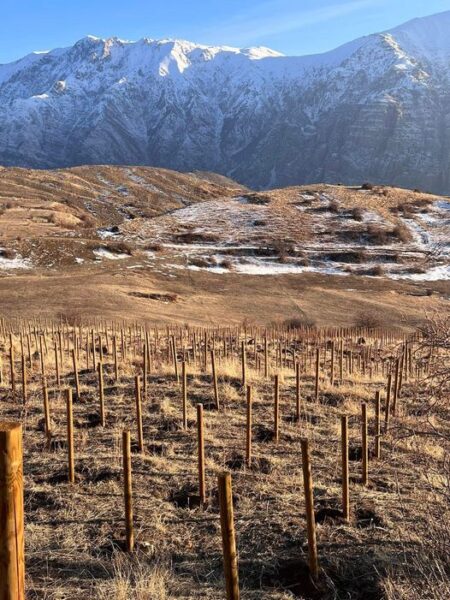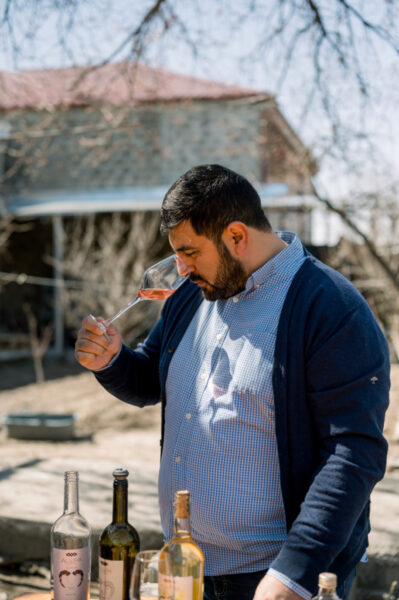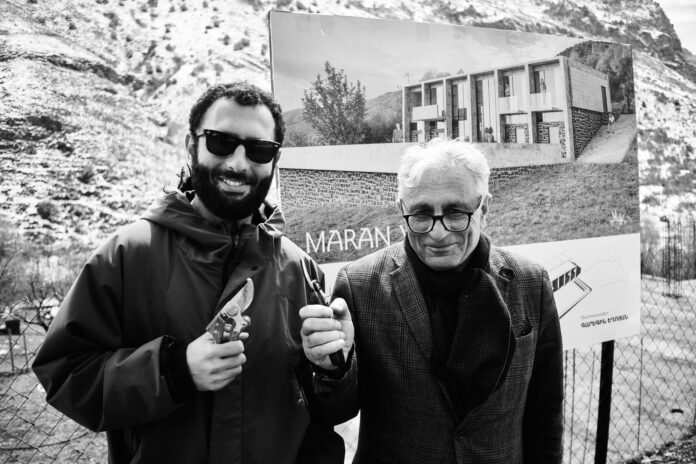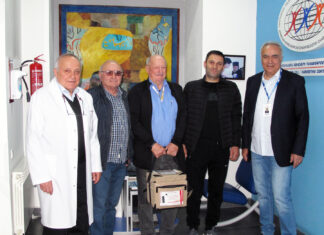YEREVAN — While winemaking in Armenia is a fabled tradition going back 6,000 years, it was abruptly halted due to the centralized Soviet economy decreeing a focus on brandy instead. Only restarting in the years after independence, Armenian wine’s rebirth is a new phenomenon, however some of the companies now making it have surprisingly deep historical roots which long predate the stoppage. They serve as a link between ancient tradition and the modern industry. Two brands in particular have fascinating stories of reclaiming a lost history, not just that of Armenia wine culture but of their own families’ links to it as well.

One example is Alluria, run by the Machanyan family from their vineyards near their ancestral home of Echmiadzin. Even before starting the company in 2016, winemaking wasn’t just a hobby for them; it’s in their blood. According to Samvel Machanyan, Alluria’s co-creator and Chief Wine Enthusiast, growing up he assumed that every Armenian family made wine because it was such a part of his family life. Despite the end of commercial wine production in Soviet Armenia, Samvel’s grandfather kept it up as a hobby. He used techniques which had been passed down to him from his father, who had settled in Echmiadzin after fleeing his hometown of Aylur near Lake Van during the genocide. Thus it was a natural decision for the Machanyans to join the Armenian wine rebirth a decade ago, doing it the only way they knew how: “We want to present to the public our family’s traditional methods rather than follow the established techniques.”
This independent streak resulted in Alluria being Armenia’s first brand of “natural wine,” a niche variety mainly known among serious connoisseurs. Natural wines are set apart by only using native wild yeasts rather than commercial ones to start fermentation, and have no added sulfites. Drinking a natural wine is a different experience, and can be divisive amongst wine lovers, but the taste for it is growing internationally, and a few other brands in Armenia have followed their lead. While the Armenian populace is still mostly unfamiliar with it, Samvel notes the influx of Russians has brought with it a great many natural wine lovers. Alluria started with two wines, both reds, and now has nine varieties. What they plan next however will be the culmination of Alluria’s motto “a renaissance of family traditions,” and an incredible story of emotional discovery.

In 2017, Samvel and some of his brothers made a pilgrimage back to their ancestral home of Aylur on a mission: find the vineyard their great-grandfather was forced to leave behind in 1915.
The Machanyan family had been engaged in winemaking, grape growing, and horse breeding there for centuries until being uprooted in 1915. The village is now inhabited by Kurds, and after asking around, the brothers were told of the site of an old vineyard which had belonged to Armenians, abandoned but with the grapes still growing wild. The vineyard was in the same place where the Machanyans were said to have lived, and as Samvel said, “We immediately felt a connection between our blood and those grapes. I was very emotional imagining my great-grandfather running around this vineyard as a child.”
They set out with their task, taking cuttings of the vines and transporting them back to Echmiadzin. Of those, one survived the transfer, which they call the “Mother Vine,” from which they planted a vineyard with fifty of its roots. Samvel estimates in five years they will have enough of these ancestral grapes to create the first hundred bottles of pure wine from it, but even prior to that they will be placing a few drops of it into each of their wines to infuse every bottle they make with that piece of family history.










